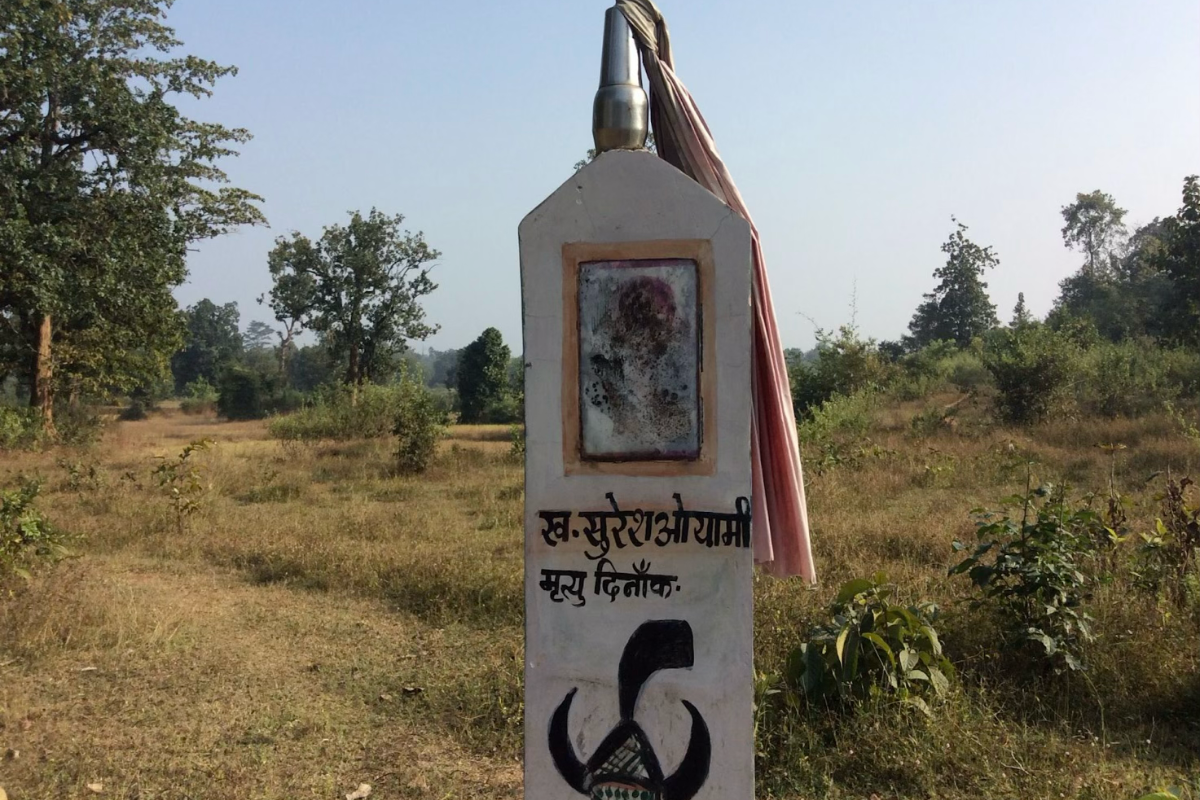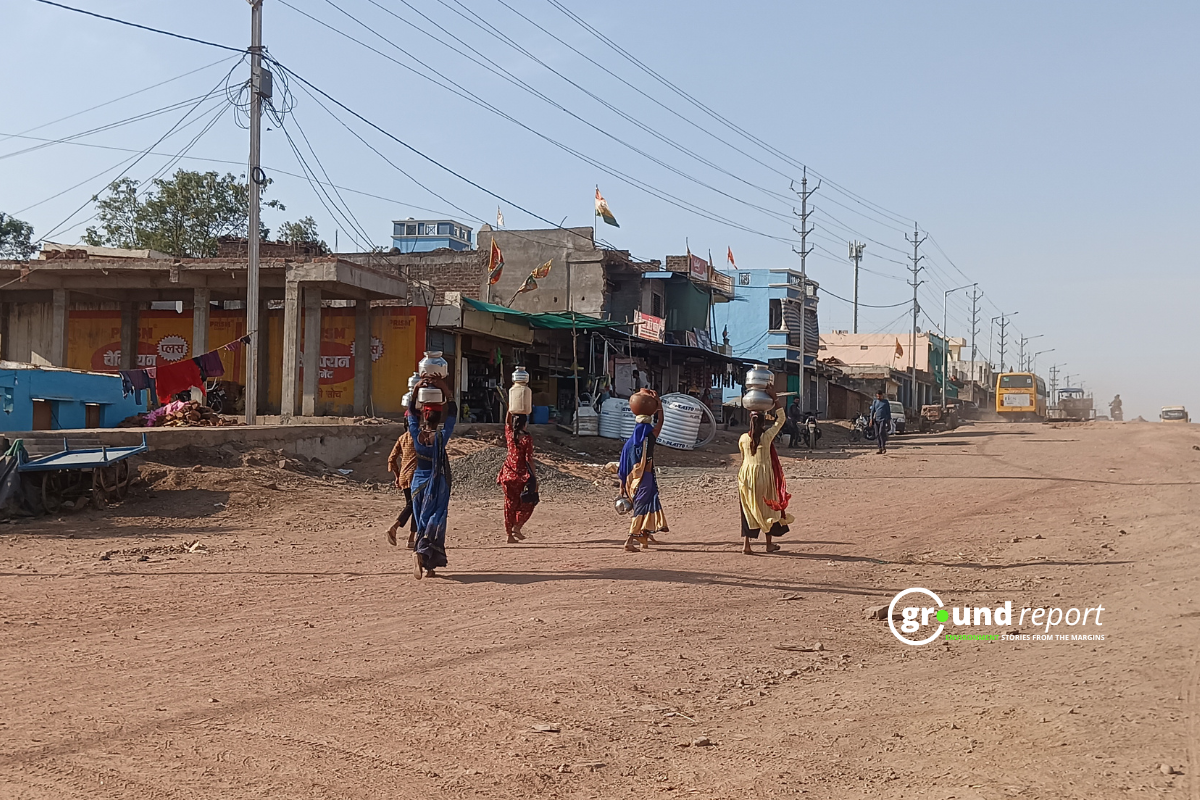Sex in 21st century India is still largely a taboo topic talked about in hushed tones behind closed doors. Public displays of affection are looked down up and sometimes even penalised. But the Murias, an indigenous tribe in Chhattisgarh, practice vastly with different attitude towards sex and sexuality.
The Muria tribe of Bastar, Chhattisgarh is a unique community that challenges the Western stereotype of Indian culture as being repressed and conservative. It practices the culture of Ghotul that challenges the modern and liberal mindset about India. The modern world teaches physical touch and intimacy with a sense of casualness to its youth. It encourages mindless casual intimacy as the anthem of modernity. Any other stance on casual physical relationships in India is labeled as regressive and orthodox. Thus, the Muria tribal tradition’s reverence for premarital physical contact allows a fascinating peep into the cultural nuances of India.
The tribal celebration of the sanctity of physical contact between men and women contradicts the casual portrayal of physical intimacy by the West. Thus, India’s traditions that are still preserved by the tribal communities, reveal a deep reverence for physical contact linked with lifetime commitment. These traditions contrast with the Western narratives while redefining the image of India in the world.
The Ghotul system is rooted in the Muria tribe’s belief in fostering strong interpersonal relationships. Here, the open acceptance of young individuals’ conversations and physical contact is a symbol of ancient Indian traditions that supported progressive views on commitment. The tradition also portrays a deep respect in Indian culture for individual choice and autonomy. Thus, the central idea of the Ghotul system is the notion of consent and personal choice. While premarital physical contact is encouraged, it is entirely voluntary. Young Muria individuals are free to interact and explore relationships at their own pace, without any pressure or coercion from families or society.
The Ghotul is a kind of Dormitory which is derived from the Latin word Dormitorium which means communal sleeping house. Most of the Dormitory are known by different names in different tribal community. Naga found their dormitory as Morung. Ho known as Gitiora, in Oraon as Dhum Kuria, Bhotia as Rang-Bang, Bhuiya as Dhangar-Bansa and Bastar tribes found their dormitory as Ghotul. There are two kinds of dormitory Mono sexual youth dormitory and Bisexual youth dormitory. Ghotul is bisexual kind of youth dormitory. Naga tribes makes different dormitory for the girls and boys. The boys’ dormitory is known as Ikhuichi and girls’ dormitory is known as Iloichi
In Bastar, Ghotul is a spacious tribal hut surrounded by earthen or wooden wall. It is an integral part of tribal people of Bastar and it is surrounded by areas like Maharashtra, Madhya Pradesh and Andra Pradesh. It is a place for youths, an independent and autonomous children’s republic. According to Gond legend Lingo, the regional tribal hero and famous god erected the Ghotul. The building where Lingo’s spirit is believed to dwell is called the Ghotul. At its entrance hangs a barrel-shaped drum (Dhol) which represents the God Lingo. A very good story is told by the Samrao Hivale about the origin of Ghotul.
The origin of the Ghotul
The Dewar who does not take advantage of his position is greatly admired. The central legend of the Muria is about Lingo their cult hero. He rose to this eminence by resisting the seduction of his six beautiful Bhaujis. He was the youngest of seven brothers and all the six Bhaujus tried their best to win his affection, but he took no notice. Ultimately they tried to take revenge by telling lies about him to their husbands who burnt him alive, and yet he was brought to life. He was buried alive but miraculously saved. At last he left the six brothers and established the Muria Ghotul- dormitory.
Ghotul has an elder Chelik who gives training to young unmarried boys and girls. There are two kinds of Ghotul found in Bastar tribal society. The first Ghotul is used by the travellers and visitors as their hunting or resting place known as Thangudi or Paik-Ghotul. The second type of Ghotul is a youth dormitory known as Koitur – Ghotul. The Paik- Ghotul is situated at the middle of the village while the Koitur Ghotul is situated at the outskirts of the village.
The Dormitory members build the Ghotul themselves. Traditionally the Ghotuls were small and of plastered or unplastered wall which were constructed by bare logs. There was a pillar at the center where they used to carve figures of Motiari, Chelik, horses, combs etc. The doors were also designed with several motifs and figures. They may be small or large and are generally very heavily made of Sagun log. Instead of small hut with a small door it becomes a big room with a very spacious compound within the fencing. There is a long rectangular hut with a verandah. It is constructed at a corner. The doors are large, facing towards the center. There are several smaller sheds without door. There is an open place in the middle which is very big and having a shelter constructed by them. Generally in smaller sheds the children usually stay, woods are kept at a sides as fencing. The fencing is made by wooden logs and bamboo sticks.
Members of the Ghotul
Ghotul is a kind of community centre away from the village, where anyone above the age of six to ten automatically becomes a member of the center. When a new member enters in the Ghotul, a new name is given to him by the Ghotul members. The dormitory boy is known as Chelik and the dormitory girl is known as Motiari. The leader of the Motiari is called ‘Belosa’ and the leader of Chelics is called ‘Sirdar’. Only bachelors are allowed in ghotul. Sirdar and Belosa are very respectable posts in the Ghotul and they are selected at festival of ‘Karepadum” in the warship of Kaderengal. Charias clean the ghotul. Musawan decorate the dormitory with fine colour and paintings. Dewan maintains discipline in ghotul. Kotware counts the number of Cheliks and Motiyari and takes attendance of them. Jamadar maintains the dresses and jewelry of the members. Chalki distributes tobacco among the Ghotul members. He is the supervisor of the festival and all the Ghotul festivals are celebrated in his supervision. Sipahi is the watchman of the Ghotul. If some unknown people enter in the village or Ghotul, they have to meet with Sipahi. Vaidh is the doctor of Ghotul as well as in the village. He knows all the Mntra and medicines. Mukhawans are the vicepersons of the Ghotul. They create new rules, maintain and modify it.
Activities in the Ghotul
Ghotul is the education centre of the regional tribal children. It is also a kind of night club where children gather and do many cultural activities. All the members of the Ghotul arrive at the Ghotul after sunset and with their sleeping mat, tobacco-pouches and other things needed for the night. In the evening when they blow the horn and beat the drum, it was an indication that the youth were preparing for the Ghotul. Cheliks and Motiari adorn themselves with jewelry, cloth and flowers. The dresses of the Ghotul members are very simple. Girls wear white skirt with the upper portion of the body being left bare, and the men wear loin cloths and turbans which are often adorned with long strings of beads wound several times around combs. There are many beautiful jewelry famous among the Ghotul members but combs are very popular and this is given by the Chelik to their Ghotul lover. These combs are made by the local Ghotul boys and decorated by many geometric motifs. The comb collection is a great presentation for the Motiyares. It was the daily routine for a girl to titillate with a comb the skin of her lover before she slept with him.
Combs are worn as ornaments in the hair. The boys make them from wood or bamboo. The connoisseurs among them decorate their comb with mirror pieces, beads, and colors. The boys also wear them, but their combs are heavier than the girls and they are worn only for decoration. If a Motiyari likes a Chelik, she steals his comb thereby allowing him to steal her heart. When the wooden bell rings, the farm activity of the Ghotul starts. They gather around it and every male is called Chelik and female is called Motiyari. They chat, joke and smoke around the camp fire. The Motiyaris sing and dance. Mandri and flute accompany the music. The beat of the drum indicates that the youth are preparing for the dance. Belosa and Sirdar decide how the couples shall be paired.
Ghotul is a kind of education center for the tribal people of Bastar where unmarried boys and girls interact with each other in a responsible manner. They are taught the right kind of social behavior. The boys and girls are often paired together, by which they get to know each other and learn to live in harmony. They have a robust social structure for generations and much of the credit goes to the most talked about Ghotul way education and social teaching that are prevalent here. In the Ghotul boys and girls learn about farming, wood carving and other skills. It is like a university with no books or texts, everyone is a student and every one is a teacher here. The beginning of Ghotul is marked with beating of drum, which immediately entices loud shrill from children. In front of the Ghotul music is played using drum and flutes and Motiyaris start dancing in circles.
Tobacco and local toddy are distributed among all and it is wonderful to watch people smoking, drinking, singing and dancing together. This is followed by the checking of home work by the elder Cheliks given to younger ones on making bamboo combs, leaf stitching etc. The dancing goes till late at night coupled with tribal style, antaksharis, puzzles and poetry. The Motiyaris flirt with the Cheliks who in turn make effort to win the Motiyaries, and the Cheliks are allowed to give special attention to only one boy or girl and are punished if found not doing so. Some taboo is also found in sexual intercourse, it is prohibited between husband and wife or among the youth in the Ghotul from the night before sowing till the new tender crop sowing.
Sex Education
The Ghotul tradition of the Muria tribals paint the equality and unisexuality of primitive human. Equality, simplicity and freedom form the fundamental fabric of the
Ghotul. Members eat, play, dress, and sleep without any separation of males and females. They can even swim into the river together without clothes on. In the Ghotul, young men and women date from the age of ten onwards. The advocates of free sex and safe sex should study this system of natural sex education at the Ghotuls. The tribals of Bastar do not have teenage pregnancies. In Ghotul, no distinction is made between love and sex. Everybody is free and behaves responsibly.
Ghotul, An Institution of Tribal Art and Culture of Bastar
Ghotul is the institution of regional tribal art and culture. Cheliks learn about carving, weaving, painting, basketry, singing and dancing in Ghotul. Ghotul building and compound are a very good example of regional tribal art. The Ghotul buildings are often decorated with wall paintings and they commonly paint many geometric pattern, human figures, vagina and phallic symbols.
According to great anthropologist Verrer Elwin “As you once went across the centre of the Muria country you find more, and more elaborate carving. The ghotul has stimulated artistic creation, not only in the realm of personal adornments but also in wall- painting and wood carving. The chelik desires that their Ghotul really should be ‘lovely as bison’s horn”.
Music, song and dance are the most significant part of the Ghotul. There are many stories, puzzles and riddles which are famous among the Ghotul members. Tribal songs of Bastar are known as Pata which are sung in different occasion.
Murmy Pata- lthese songs are sung in local marriage ceremony by Motiaries. Murmy Pata is also famous among the married women. But no widow can sing this song.
Reala Pata- Rela Pata is also sung in different festive occasions. These songs are liked by the Relo Pata. Every Ghotul member should learn to list one Reala Song. These songs are sometimes used for the punishment of Chelik and Mutiaries
Hanal Pata- In Bastar dead man’s soul is known as Hanali or Jiva. When a man dies, the body is carried out to burial ground with singing and dancing with Hatur-Dhol. On this occasion they sing Honal Pata for the dead man.
Pen Pata- You can find totems of god and goddesses in Muria pantheon. Songs which are sung for the tribal deities known as Pen Pata
Parka Pata- Ghotul Pata is a kind of cultivation song. The villagers give the Cheliks a piece of land for cultivation which is known as Chelik- Parka. During the cultivation they sing many songs. This song is known as Parka Pata.
Lingo Pata- Lingo is a god, hero, famous ancestor and the founder of Ghotul in the Bastar. He discovered the liquor and many useful things for the local people, so they sing many songs to humor the Lingo pen
Ditong Dance or Gedi Dance is performed by the Muria boys with girls to woo them and show physical balance. Gedi is basically a pair of stilts made of Bamboo having footrests. Muria youths strike these stilts on the land to make modest musical beats; both boys and girls perform Gedi Dance in a circle.
Riddles- There are many riddles famous among the ghotul members. They used to sport with riddles are common among tribes.
Dreams- Dreams have many symbolic meaning. Chalik and Mutiyari see many dreams and their dreams are interpreted in different manner. The ancestor gives some code message from the other world and only the wise man can decipher them.
It is understood that Ghotul is the most primitive tribal institution in India. Most literature is composed in and around Ghotul. This institution preserved many cultural aspects and stimulated the tribe to develop and preserve their dance, song and music. The Bastar tribal life looks more collective, organized and disciplined than any other tribes.
The Ghotul system challenges conventional notions of courtship and marriage prevalent in the world about Indian societies. While pre-marital contact might raise eyebrows in prudent societies and religions, the Muria tribes of Bastar celebrates open communication, mutual respect and life-long commitment. The Ghotul system successfully proves that Indian culture is accepting of personal autonomy on the subject of marriage and potential Ilfe partners.
As the world evolves, religions have started to follow strictly defined tracks and narratives. We should not forget that traditional Indian societies had a firm cornerstone of acceptance of intimacy. However, this acceptance was bound by tradition, consent and marriage.
The Muria tribe is struggling to preserve their cultural heritage in the modern age where premarital physical contact is misunderstood or misused. The Ghotul system is facing challenges due to changing lifestyles and external influences. Therefore, this unique symbol of Indian Culture that redefines orthodox perceptions of India must be allowed to retain its essence.
Follow Ground Report for Environmental News from India. Connect with us on Facebook, Twitter, Koo App, Instagram, Whatsapp and YouTube. Write us at GReport2018@gmail.com and subscribe to our free newsletter.
Don’t forget to check out our climate glossary, it helps in learning difficult environmental terms in simple language.










